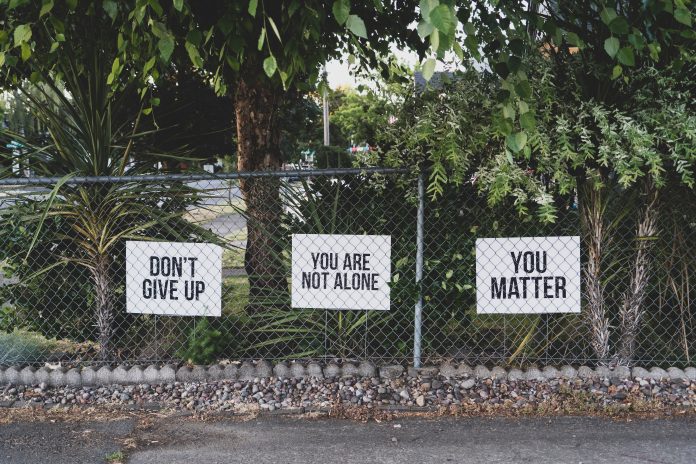Suicide affects people from all ages, genders, socioeconomic, cultural, and ethnic groups, and it has emotional, financial, and psychological impacts on individuals, families, and communities.
You can help prevent suicide.
One of the major ways to help is to reduce the stigma around suicide. Stigma contributes to feelings of fear, shame, and guilt. We can help decrease stigma by talking about suicide with understanding and compassion.
When talking about suicide, use people-first language (someone with suicidal thoughts instead of a suicidal person). Phrases such as death by suicide, died by suicide, or suicide describe what really happened and respect family and friends left behind.
It is hard to know if someone is thinking about suicide, but if you are or know someone who is, help is available. Recognizing the risk factors and warning signs is important in preventing suicide.
Risk Factors May Include:
- Barriers to accessing social and health services.
- Mental illnesses such as depression, anxiety, and bipolar disorder.
- Traumatic life events such as the death of a partner or friend, divorce, or financial issues.
- Family violence, including physical or sexual abuse.
- Diagnosis of a serious physical illness.
Warning Signs May Include:
- Planning or saying they want to hurt or kill themselves or someone else.
- Talking, writing, reading, or drawing about death, including writing suicide notes and talking about items that can cause physical harm, such as pills, guns or knives.
- Saying they have no hope, they feel trapped, or there is no point in “going on.”
Take any mention of suicide seriously and get help right away if someone you know is in immediate risk of suicide.
What You Can Do:
- Call 911, a suicide hotline (see telephone numbers below), or the police.
- Stay with the person or ask someone you trust to stay with the person until the crisis has passed.
- Encourage the person to seek professional help.
- Don’t argue with the person (“It’s not as bad as you think”) or challenge the person (“You’re not the type to attempt suicide”).
- Tell the person that you are there to support them. Talk about the situation as openly as possible.
When thinking about how to help someone, use the REACH Pathway (Recognize, Engage, Ask, Connect, and Heal) to help remember what you can do: recognize when someone is struggling, engage in conversation and listen, ask about suicidal thoughts and feelings, connect to support and resources, and take care of your own mental health.
To learn more, visit MyHealth.Alberta.ca.
Here are More Resources to Help:
- Health Link, 811
- Kids Help Phone
Visit: kidshelpphone.ca
Call: 1-800-668-6868
- AHS Mental Health Line
Call: 1-877-303-2642
- Hope for Wellness: First Nations & Inuit Populations
Call: 1-855-242-3310
Online chat: hopeforwellness.ca
- Canada Suicide Prevention Service
Call: 1-833-456-4566
Online chat: crisisservicescanada.ca
Text: 45645
- National Trans Lifeline










